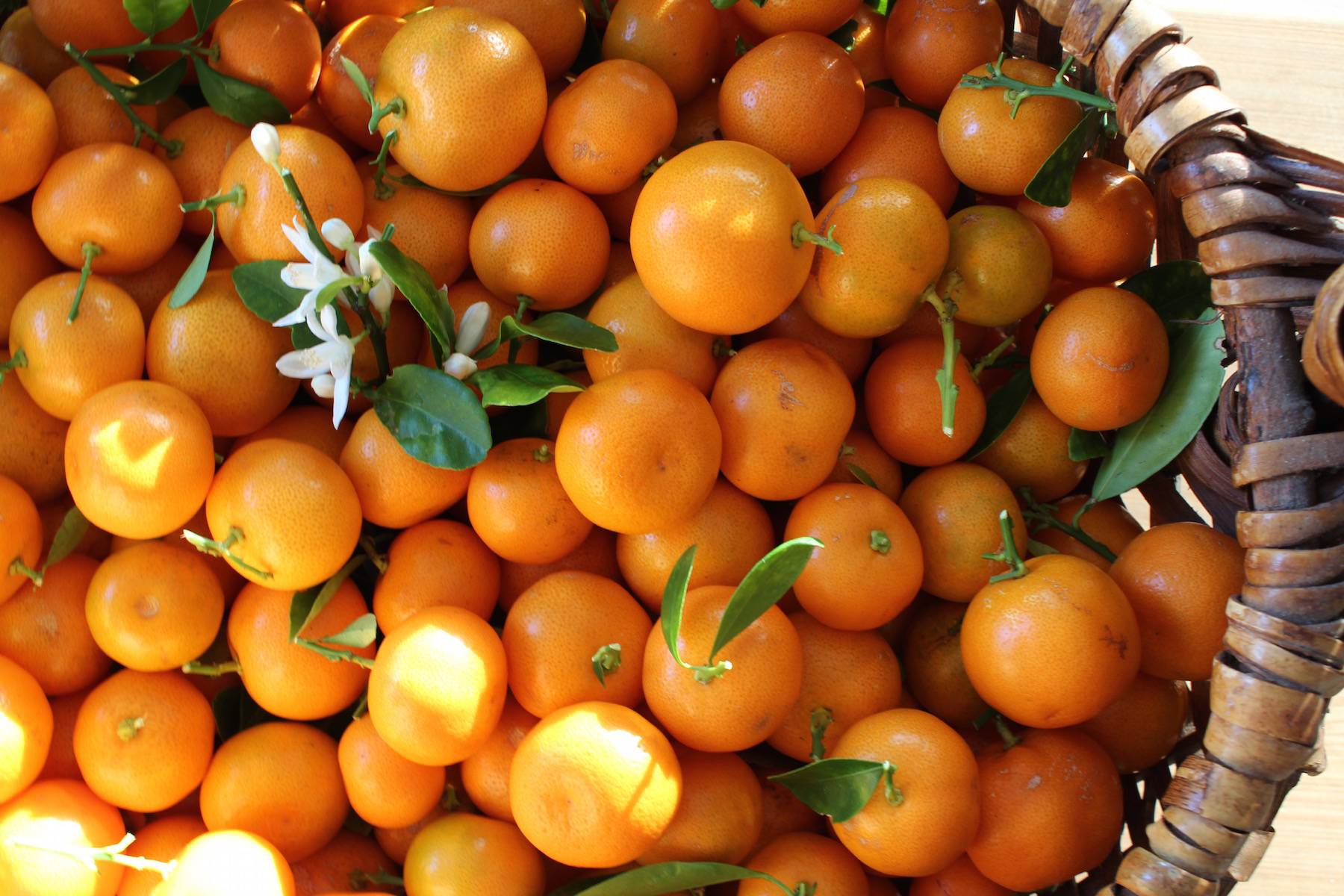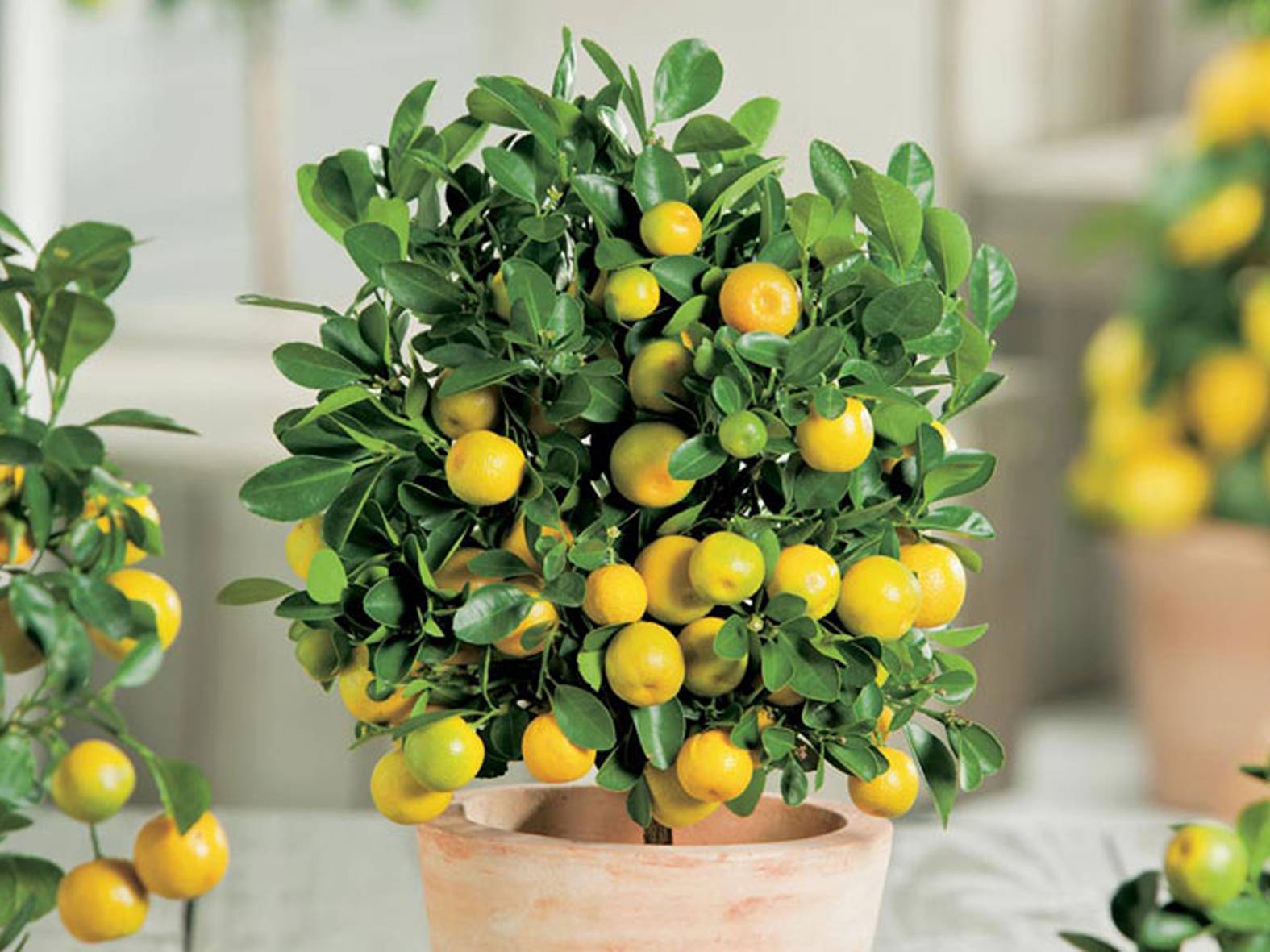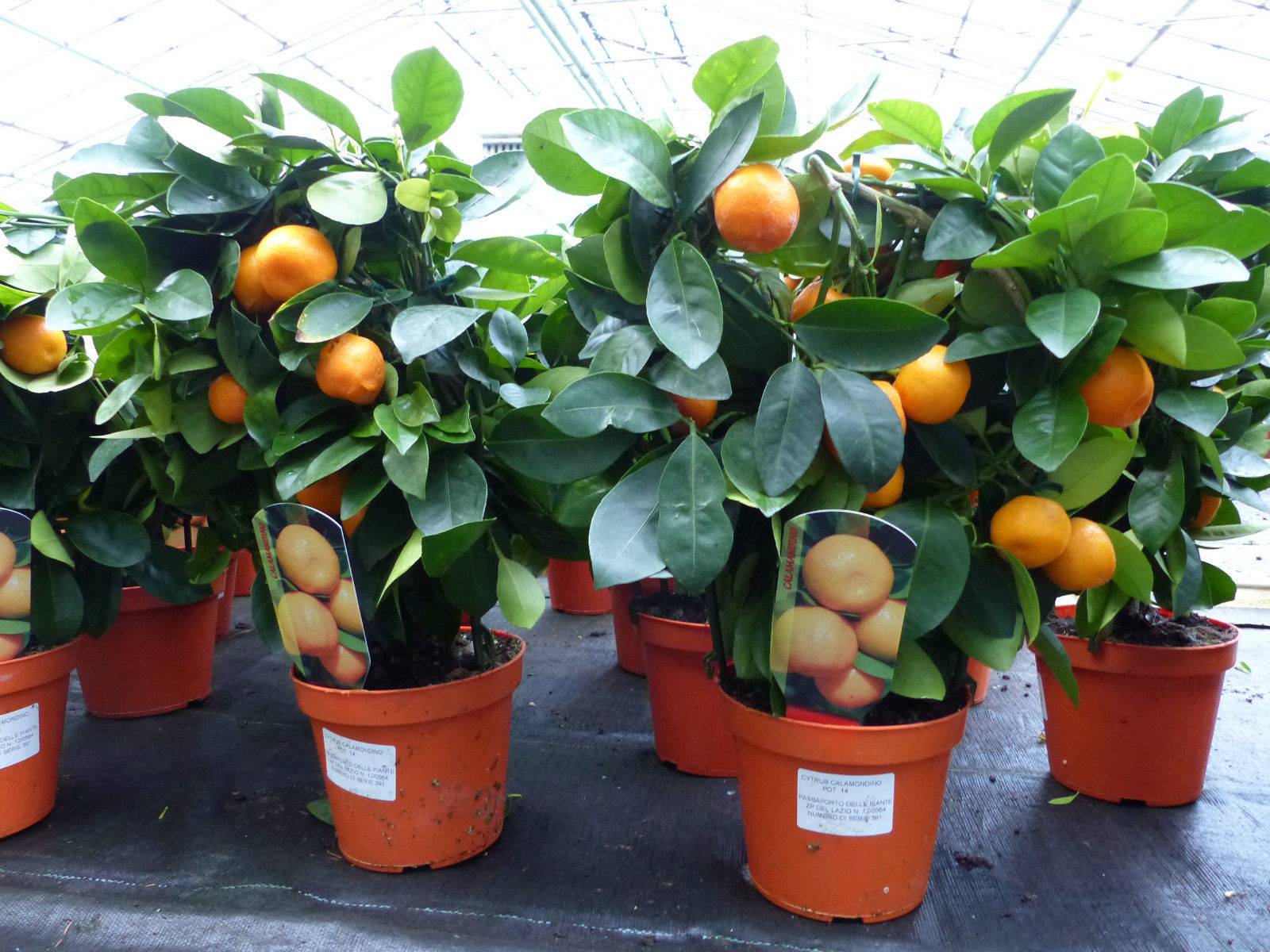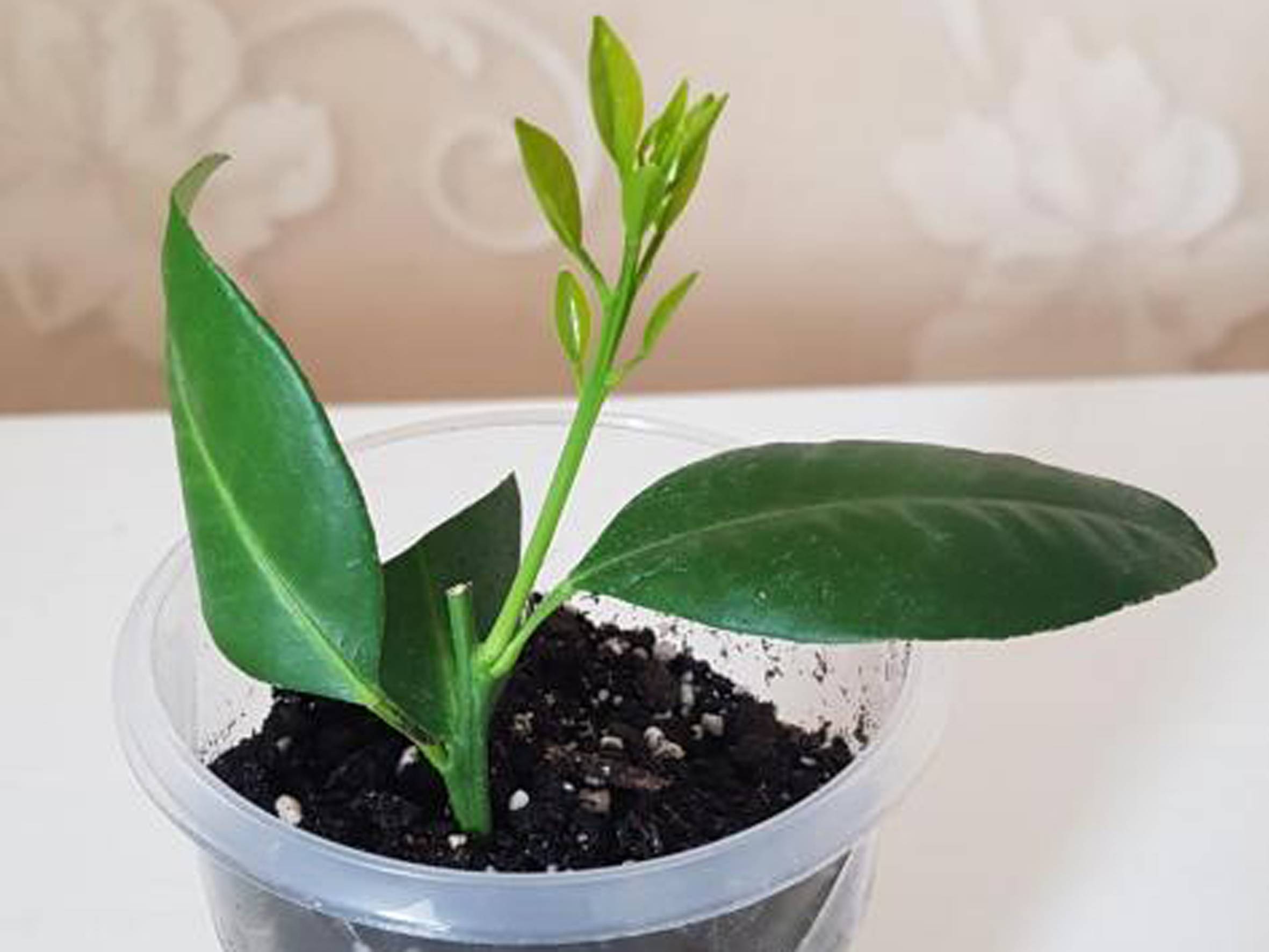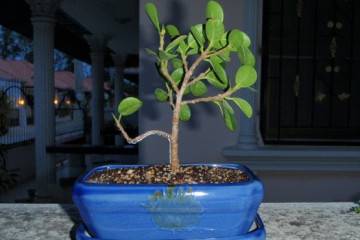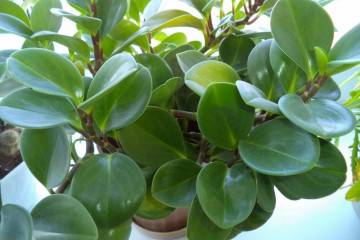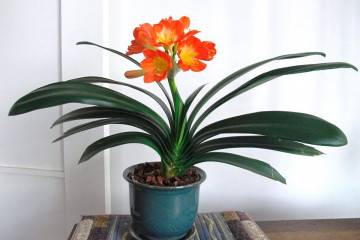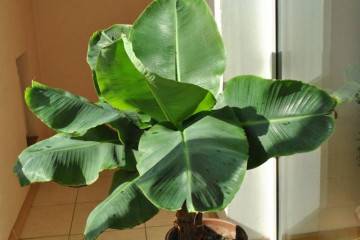Calamondin - home care for citrus
Content:
Having an exotic plant at home that also bears fruit is a very tempting prospect. Many citrus fruits are large plants, for which there is not a place in every apartment. Calamondin (citrus calamondin) in this case is just a godsend. It combines attractive appearance, light citrus aroma and compactness. A separate plus is that it is quite simple to care for this plant.
Calamondin
The homeland of the plant is Asia. In natural conditions, calamondin is a citrus that is larger in size and is a shrub 5-6 meters high.
Calamondin was obtained by crossing mandarin and fortunella (kumquat). The second name of the plant is citrofortunella. It appeared as a combination of two words - citrus and fortunella. We can say that calamondin is a micro citrus.
Description
The appearance of this plant can be characterized by three main parameters: leaves, flowers and fruits.
| Leaves | Dark green rounded shape. They have a dense structure, rather large. Due to the accumulation of essential oils in the plate, they exude a pleasant citrus aroma. |
| Flowers | The flowering period is in the spring. The flowers are small, white or milky-beige, collected in inflorescences. The smell is pleasant, with citrus notes. |
| Fruit | They are very similar in appearance to tangerines, but smaller in size. The taste is sweet - sour, pronounced citrus. The fruit contains a lot of seeds. With proper care, fruiting is abundant and long lasting. |
The size of the bush depends on the variety and growing conditions. In the presence of free space and comfortable conditions, calamondin can reach a height of 2-3 meters. Such a large specimen, as a rule, can only be grown in greenhouse conditions.
Despite the low taste of the fruits, they are no less useful than other citrus fruits. They are rich in vitamin C and vitamins.
Home care for citrofortunella
In order for homemade calamondin to look healthy and delight with fragrant fruits, it must be provided with certain conditions. The main care is watering, fertilizing and regular spraying.
Lighting and temperature control
Citrofortunella is very demanding on light. It is best to place the pot on a south or east window.
The plant should be protected from direct sunlight. In the summer, the leaves should be shaded, and in the winter, the roots. For the winter period, it will not hurt to install additional lighting for additional lighting.
To achieve abundant and regular fruiting, it is necessary to strictly observe the temperature regime required by citrofortunella. Calamondin loves warmth, but during the rest period it is necessary to lower the temperature. During active growth, the optimum temperature is 20-25 ° C during the day and 17-19 ° C at night. During the rest period, these indicators are reduced by 2-3 ° C.
Watering and humidity
The ideal indicator of air humidity for citrofortunella is 70-80%.This is what often causes difficulty for flower growers, since it is difficult to provide such conditions, especially in the winter heating season.
To increase the humidity level, it is necessary to spray regularly. You can put a container with a plant on a pallet filled with expanded clay and moisten it regularly.
During the period of active growth and ripening of fruits, the soil in the pot should be moist all the time, the soil should not dry out more than 1-1.5 cm. Water stagnation in the pan should not be allowed, it should be poured out, and the pan should be wiped off. During the rest period, it is enough to water 1-2 times a month.
Top dressing and soil quality
Given that calamondin grows in a confined space and at the same time has a very developed root system, it needs regular feeding.
During the period of activity, fertilizers should be applied at intervals of 6-8 days. As a top dressing, it is better to use special preparations that are sold in garden centers and flower shops. During the rest period, the frequency of feeding is reduced to two times a month.
Soil quality is very important for the proper growth of Calamondin. The soil should be light, breathable and nutritious. It is better to purchase a ready-made substrate in the store. For self-preparation, mix soil for indoor plants with sand and humus in proportions of 2/1/1, respectively.
Tank size
Citrofortunella is a very large shrub with a voluminous root system. A spacious container is suitable for planting, the size of which exceeds the volume of roots with a lump of earth by 1.5 times.
Pruning
Formation is a mandatory agricultural technique for fruiting shrubs and citrofortunella is no exception. When pruning, you must adhere to certain rules:
- Formation begins when the plant reaches a height of 20-25 cm.
- The height of the trunk should be 25-30 cm.
- Pruning begins with shortening the shoots of the 4th and 3rd order.
- The crown is thinned out in such a way that several skeletal branches remain on one tier.
- The branches of the second order are shortened as necessary.
The best time to do formative pruning is from February to June. Pruning the rest of the time is rather supportive. It consists in shortening shoots that have strayed beyond the boundaries of the planned crown shape.
Transfer
Calamandin needs two types of transplantation - planned and after purchasing a plant in a store. There are certain nuances and rules for each case.
Planned transplant
For young specimens, the soil and pot are replaced every spring; for older specimens, it is enough to carry out this procedure every 2-3 years. Step by step it looks like this:
- The day before the transplant, the plant is watered abundantly.
- The calamandine is removed from the old pot by gently pulling on the trunk.
- At the bottom of the new container, drainage is poured with a layer of 2-3 cm from crushed stone, expanded clay or broken brick.
- The root system with a clod of earth is placed in the center of the pot.
- The voids are filled with soil, leaving a small distance from the upper edge of the container.
- Watering is carried out and the soil is filled up.
Transfer after purchase
After purchasing calamandine in the store, you should not immediately start the transplant.This plant is very sensitive to changes in growing conditions, it takes 10-14 days to acclimatize. For this period, it is better to leave the bush alone and cover it with a plastic bag.
Do not worry if the plant sheds some of the leaves. This is a natural process after a change in conditions of detention. When the acclimatization period has passed, the vegetative mass of the crown will return to normal.
Flowering calamondin
There are many varieties of Calamondin that can be successfully grown indoors. The main difference between them is the appearance and taste of the fruit. Flowers can differ only in shades of petals - from white to cream.
There are several particularly noteworthy species.
- Margarita Nagami. The fruit looks more like an orange in color and a lemon in taste.
- Margarita Big. The pear-shaped fruit is a distinctive feature of this variety.
- Meiva. The advantage is the sweet taste of the fruit and the absence of seeds in them.
- Tiger. A peculiarity of the variety is the unusual color of the leaves - they have a golden rim along the edge.
- Senteniel. During fruiting, unusual fruits appear on the bush, resembling watermelons in appearance.
Picture 5 Senteniel variety amazes with the appearance of fruits
There are many more varieties, each with their own strengths. For example, for those who love blooming calamandines, the Peters variety is well suited. It blooms profusely and beautifully, but its fruits cannot be called tasty.
Reproduction
Getting a calamandina sapling at home is not so easy. Most often, two types of reproduction are used - planting with a bone and cuttings.
From the bone
It takes quite a long time to grow citrofortunella from a seed. In order for it to germinate, it is often not enough to provide soil moisture and greenhouse conditions. Only the use of special drugs to stimulate growth can help.
Cuttings
More often propagation of calamondin is carried out by cuttings. For cutting cuttings, choose healthy shoots from the top of the crown. The cuttings should have large leaves and developed buds.
After processing the cuttings with a growth stimulant, they are planted in moist soil and a shelter is installed. It is necessary to ventilate the greenhouse for an hour every day.
It is also necessary to monitor the moisture content of the soil and periodically spray the seedlings. After a month, the cuttings will take root and you can gradually teach them to grow without shelter.
Diseases and pests
In the process of growing, there is a possibility of encountering a number of difficulties. If calamondin is ill, what is it - a disease or errors in care, how to determine? There are some of the most common symptoms that can raise questions.
Calamondin drops leaves and branches dry - what to do
There may be several reasons for this behavior. First of all, you need to think about the correctness of the temperature regime and the frequency of watering. Also, the cause of leaf fall may be direct sunlight on the leaves.
In addition to mistakes in care, there is a possibility that the plant is sick. There are two diseases that have similar symptoms:
- anthracnose;
- hommosis.
If the reason for the deterioration in appearance is a disease, it is necessary to immediately carry out treatment with special preparations. In especially severe cases, it is better to resort to an unscheduled transplant.
Unripe fruits fall
The main cause of this malaise is a lack of nutrients. The lack of timely feeding and ignoring the planned transplant leads to the depletion of the plant. As a result, the calamandine simply does not have enough strength to ripen the fruits.
A disease such as gommosis can cause the fruit to fall off. This ailment affects not only leaves and stems, but also fruits.In this case, it is better to remove those that have not yet fallen off, and carry out processing.
Does not bloom
There are several reasons for the lack of flowering. All of them are related to the conditions of detention.
- lack of light;
- non-observance of the temperature regime;
- lack of nutrition;
- wrong watering regime.
In order to achieve flowering, it is necessary to reconsider the care. Eliminating mistakes will definitely lead to flowering.
A very exotic and ornamental plant, citrofortunella (calamondin). Can the fruits of this plant be eaten? You can and should! It will not only become a highlight of the interior, but will also give a harvest of fragrant tasty fruits.
The care and conditions for keeping citrofortunella are not as difficult as it might seem. If calamondin is ill, home care is not carried out correctly. Compliance with the rules of watering, temperature and light conditions, top dressing and pruning - that's all that is needed for the full growth of this plant.
